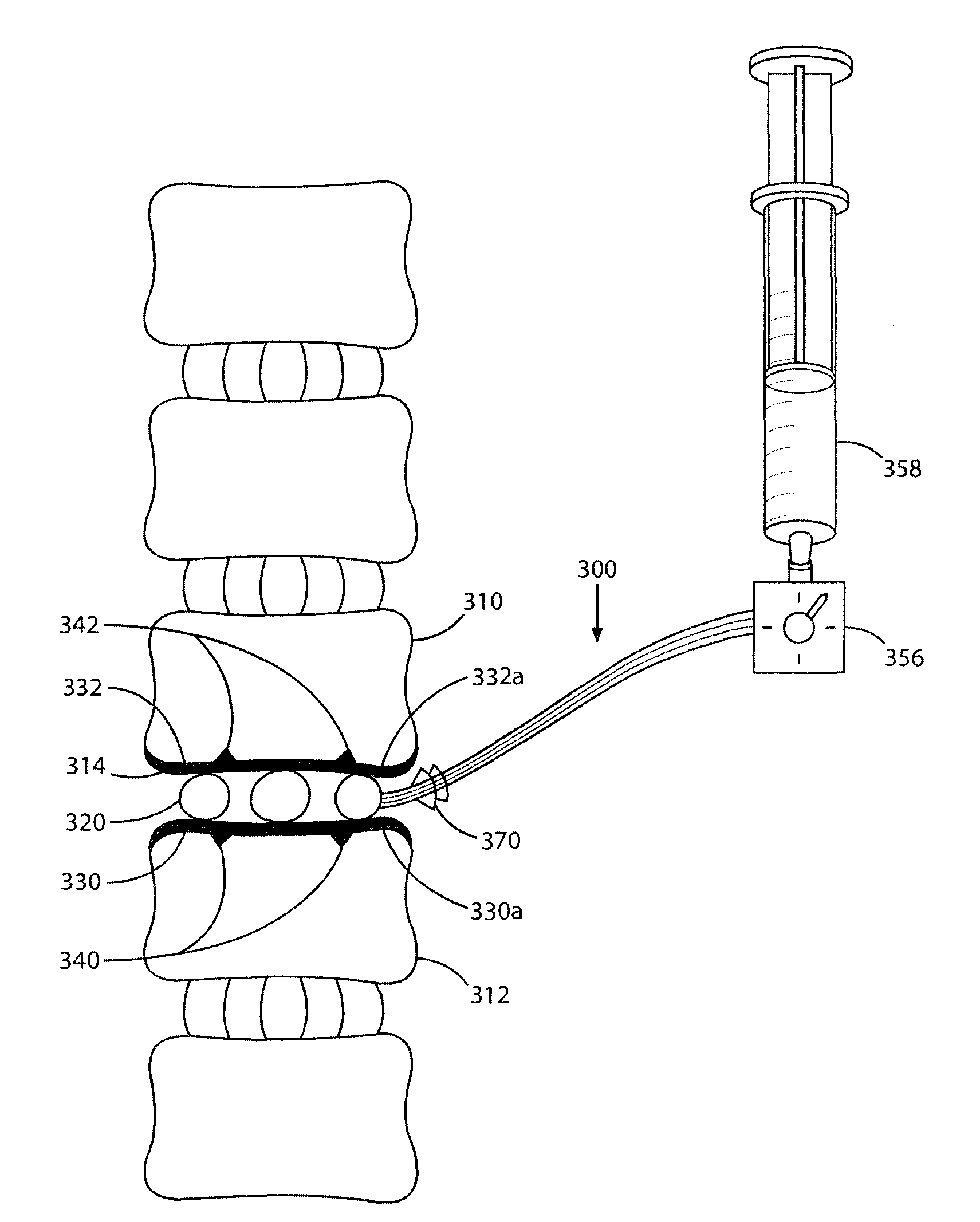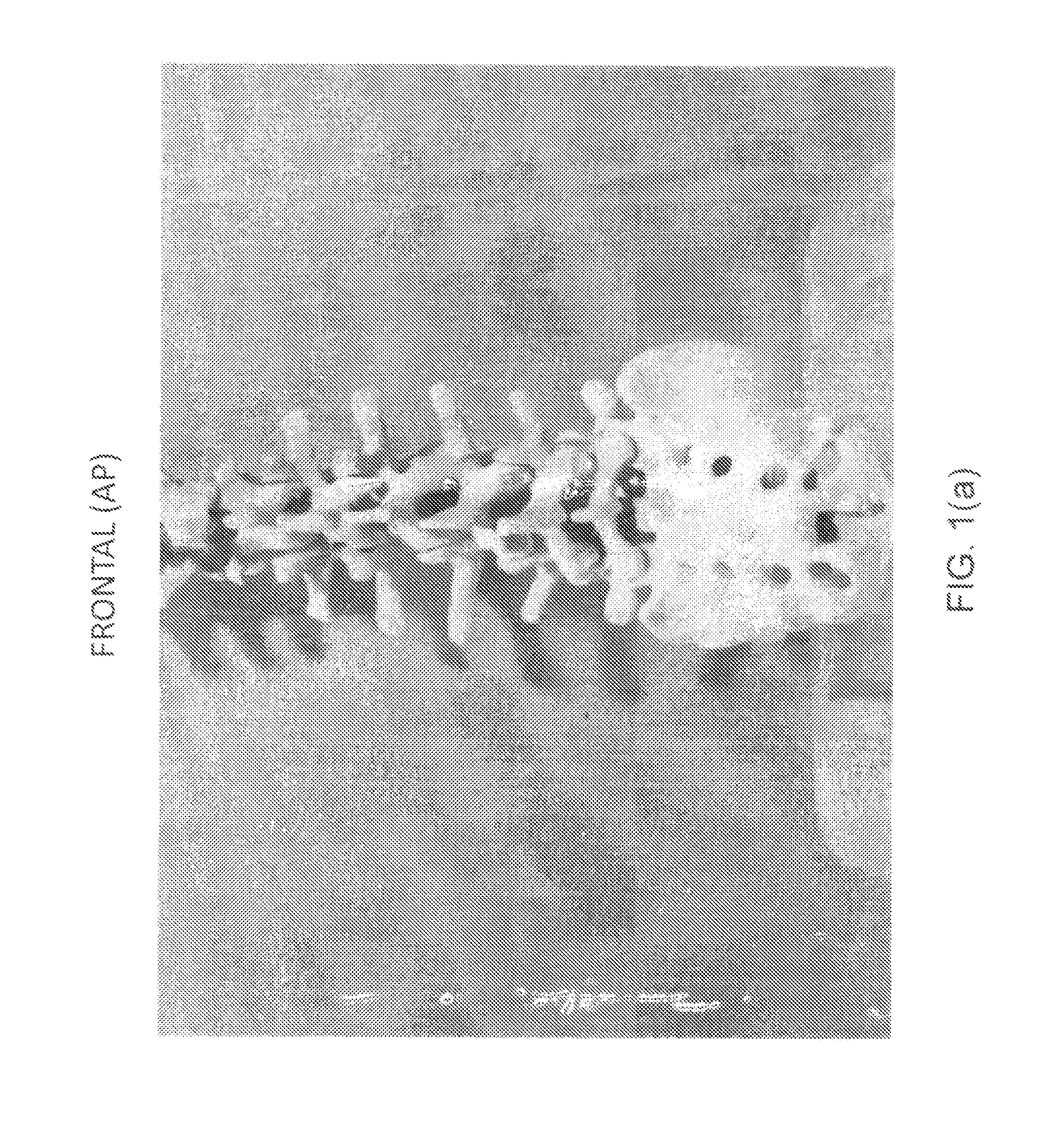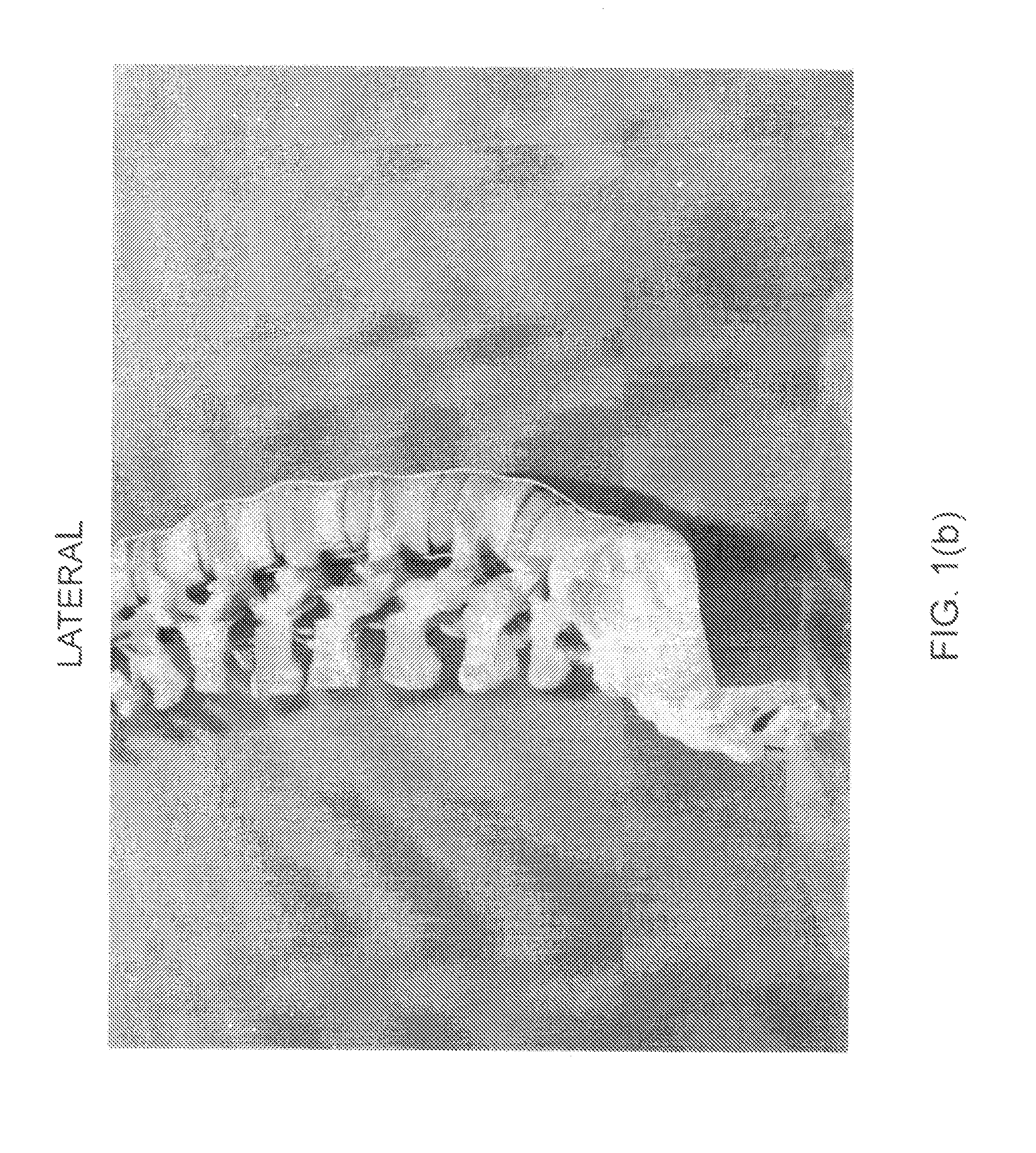System for determining and placing spinal implants or prostheses
a technology for spinal implants and prostheses, applied in the field of spinal implants or prostheses, can solve the problems of inability to detect pain alone by x-ray or scan, and the wide variation of patient outcomes
- Summary
- Abstract
- Description
- Claims
- Application Information
AI Technical Summary
Benefits of technology
Problems solved by technology
Method used
Image
Examples
example one
[0039]Patient 1 is positioned and attached to a mobile surgical table 102 such as, e.g., the SpineSix table mentioned above. The patient controls the table 102 to move his / her spine into extremes of flexion, extension, bending, rotation, distraction and compression. The patient then manipulates the table to position their spine in a position where he or she experiences maximum pain (POP). The table position is recorded in terms of degrees of flexion, extension, bending, rotation, distraction and compression.
[0040]FIG. 13 is a radiographic image (plain x-ray) of the patient's spine in the POP, obtained from a scanner 104 in FIG. 12. The image, which may be taken and recorded digitally, is a plain lateral x-ray in which selected angles of lordosis and kyphosis associated with the motion segment are measured. In this example, MRI images are preferred instead of plain x-rays so that anatomical characteristics of the patient's POP and POC can be quantified once the positions are determin...
example two
[0045]Patient 2 is positioned and attached to the mobile table 102. The patient controls the table 102 to move his / her spine into extremes of flexion, extension, bending, rotation, distraction and compression. The patient then manipulates the table to a position where he or she experiences maximum pain (POP). The table position is recorded in terms of degrees of spinal flexion, extension, bending, rotation, distraction and compression.
[0046]MRI radiographic lateral and coronal images of the patient's spine in the POP are taken separately by the scanner 104 and recorded. FIG. 18 shows the sagittal (lateral) view of the MRI taken with patient 2 in the POP. The image of FIG. 18 reveals anterior shift of L4 on L5 which is consistent with instability at that level and therefore presumed to be a spinal level of pain. Further, the image shows a posterior shift of L5 on S1 which is consistent with instability at that level and is therefore also presumed to be a spinal level of pain. Accordi...
PUM
| Property | Measurement | Unit |
|---|---|---|
| Flexibility | aaaaa | aaaaa |
Abstract
Description
Claims
Application Information
 Login to View More
Login to View More - R&D
- Intellectual Property
- Life Sciences
- Materials
- Tech Scout
- Unparalleled Data Quality
- Higher Quality Content
- 60% Fewer Hallucinations
Browse by: Latest US Patents, China's latest patents, Technical Efficacy Thesaurus, Application Domain, Technology Topic, Popular Technical Reports.
© 2025 PatSnap. All rights reserved.Legal|Privacy policy|Modern Slavery Act Transparency Statement|Sitemap|About US| Contact US: help@patsnap.com



